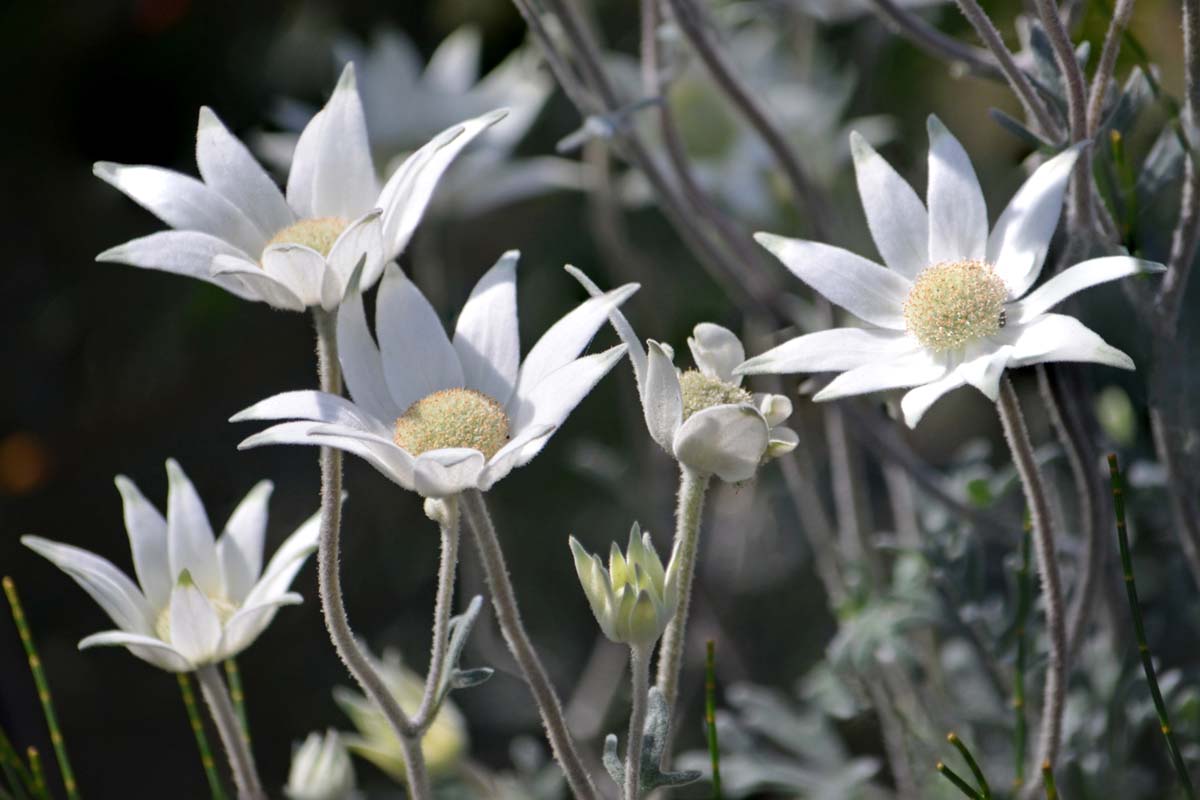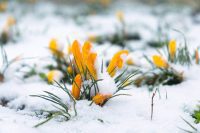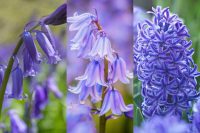Flannel flower at a glance
| Family | Apiaceae |
| Botanical name | Actinotus helianthi |
| Common names | Flannel flower, Sydney flannel flower |
| Plant type | Herbaceous plant/shrub |
| Flower colour | White |
| Leaf colour | Green/grey |
| Sun exposure | Full sun to part shade |
| Soil pH | Moderately acidic 5.5 to 6.5 |
| Soil type | Sandy, sandy loam |
| Mature height | 30 – 50 cm |
| Flower size | 2.5 – 4 cm |
| Habitat | Coastal heathlands and other sandy areas |
| Bloom time | Spring, summer and autumn |
| Conservation status in NSW | Protected |
| Symbolism | Mental health awareness |
| Toxic status | Non toxic |
Botanical name meaning
|
What is flannel flower?

Flannel flower (Actinotus helianthi) is a small shrub endemic to the bushland of central and south-eastern Queensland down to the south coast and western slopes of New South Wales. Actinotus spp., contains 20 species, 19 are endemic to Australia, and one to New Zealand, the focus of this article is on Actinotus helianthi, commonly known as flannel flower or Sydney flannel flower.
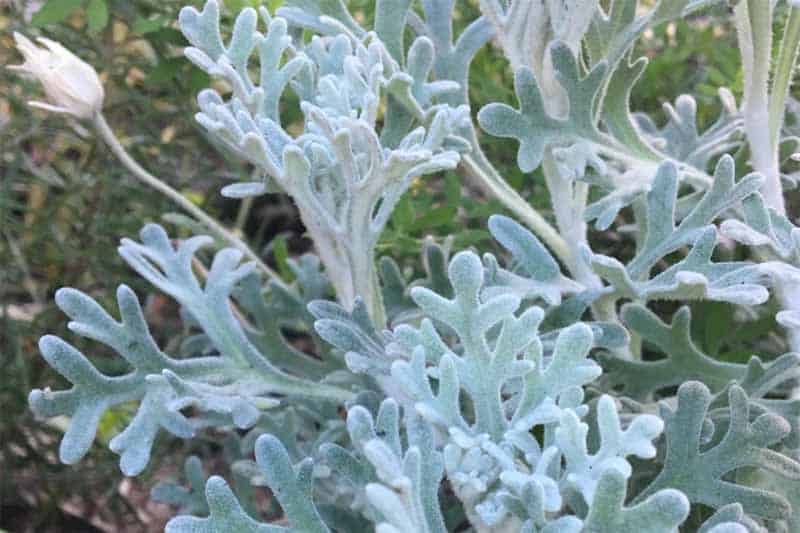
Despite the daisy-like appearance, flannel flowers are members of the Apiaceae family, including carrots, celery, and parsley. Flannel flowers have become a staple in native gardens and are grown commercially for the cut flower market. They grow to a height of 30 – 50 cm, with silver-grey biternately divided leaves.
Appearance
Flowers: The flowers are actinomorphic, which is a type of flower that has radial symmetry. Flannel flowers can flower throughout the year, but the peak flowering season occurs between September and November. As we head into winter, our local flannel flowers are still producing flowers, but we are not seeing the mass display of flowers during that occur during peak season. The flowers grow in a densely packed cluster 1 – 1.5 cm wide and are surrounded by petal-like bracts, which are modified leaves.
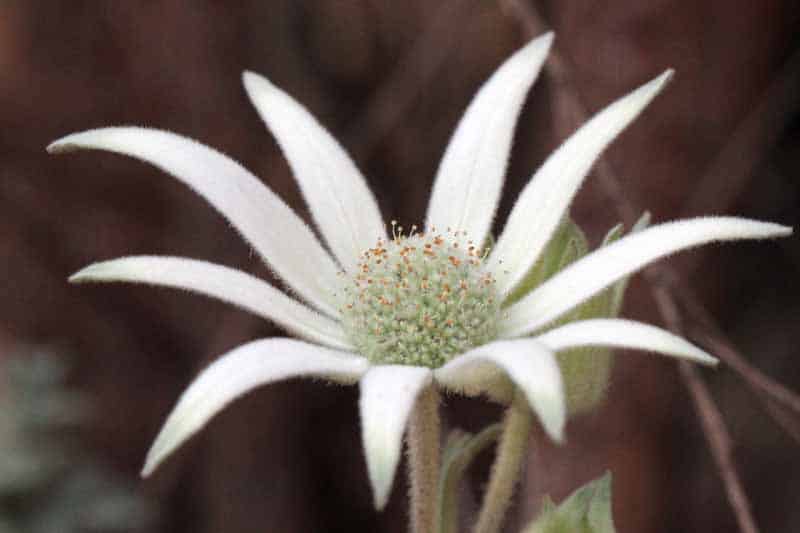
Leaves: Flannel flower leaves are lanceolate (lance-shaped) to ovate (egg-shaped) and are covered in a dense layer of soft grey hairs (hence the name). The hairs help the plant withstand the harsh Australian sunlight and conserve moisture.
How to grow flannel flowers
Flannel flower plugs:
Flannel flowers are pollinated by insects such as bees and flies.
Plant mid-spring to early summer in full sun to part shade, with protection from strong winds that can damage their woody stems. The preferred habitat of the flannel flower is poor, sandy soil with sandstone chunks to protect the shallow roots from desiccation. However, flannel flower can grow in a wide range of soils as long as they are well-draining to avoid prolonged wet roots that are prone to rot.
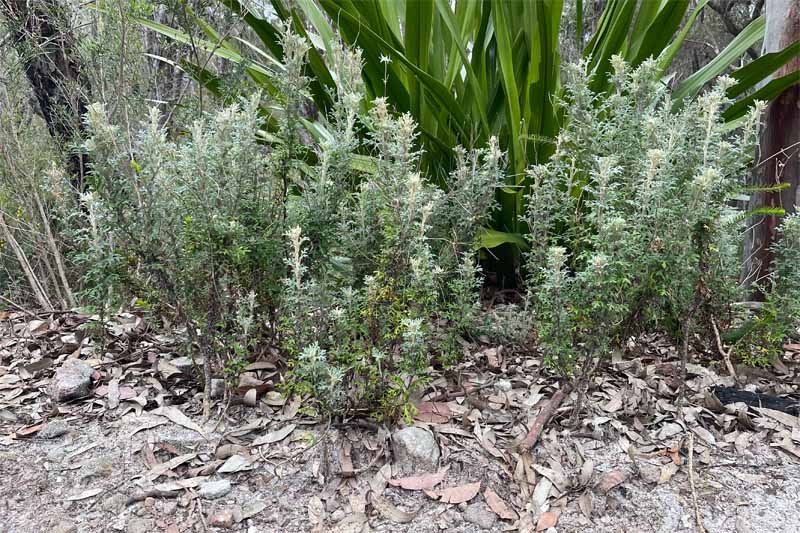
Flannel flowers are ideal for container gardening or can be planted in garden beds and rockeries. For best results, plant flannel flowers in groups. The roots are extremely sensitive to disturbance and do not transplant well. Gardeners must take care to avoid moving or digging around the root system. A good quality mulch at a depth of 100 mm, avoid contact with the woody stem.
Flannel flowers are heavy feeders and have high nutrient requirements. Feed a good quality low phosphorous controlled-release fertiliser during planting and supplement with a complete liquid fertiliser once a month during the active blooming period.
A light pruning after flowering will promote bushiness and increase flower yield the following season.
Flannel flowers are susceptible to Botrytis during extended wet weather. Monitor for signs of infection and treat with an appropriate fungicide if necessary. Avoid overwatering and wetting the foliage and plant 50 cm apart to allow good airflow between plants.
Growing flannel flower from seeds
Most flannel flowers are grown from seed or tip cutting. The best time to germinate seeds is spring or autumn when temperatures sit around 20° C. Flannel flowers will not germinate in temperatures above 30° C. Germination can take as little as 30 days or as long as 12 months.
Make a seed-raising mixture of equal parts perlite, peat and vermiculite. Add the seeds to the mix, cover with 5 mm of seed-raising mix and water well.
Take great care when planting seedlings to avoid disturbing the roots. If planting in pots, mix 1 part coarse sand to 5 parts premium potting mix.
Where can I buy flannel flowers?
Please do not dig up flannel flowers in the wild, as removing flora from the wild is illegal and they do not transplant well. Most native plant nurseries sell flannel flower plugs at a low price or seeds can be purchased online.
Health benefits
Flannel flowers contain various chemical compounds including flavonoids and phenolic acids, which have been studied for their potential health benefits.
In traditional medicine, flannel flowers have been used for centuries by Indigenous Australians for their anti-inflammatory and analgesic properties.
Frequently asked questions
Is it illegal to pick flannel flowers?
In most regions, picking native flora including flannel flowers is illegal as it depletes seed reserves and any disturbance of the delicate root system can kill the plant. Our continued encroachment into native habitats has resulted in smaller and smaller pockets of bushland for our flora and fauna to survive. Most native plant nurseries sell flannel flowers year-round.
Are flannel flowers toxic?
Flannel flowers are not toxic to people or pets, however, prolonged exposure to the fine hairs can cause an allergic reaction in some people. Always handle with gardening gloves to avoid exposure.
Drying flannel flowers
Hang upside down in a well-ventilated room for 5 – 6 weeks.
Do flannel flowers have a scent?
Flannel flowers do not have a scent. One of the most beautifully scented flowers endemic to NSW is the kunzea, which produces a mass of white or pink honey-scented flowers in mid-spring.
Julia is a writer and landscape consultant from Wollongong with a love of horticulture. She had been an avid gardener for over 30 years, collects rare variegated plants and is a home orchardist. Julia is passionate about learning and sharing her knowledge of plant propagation and plant toxicology. Whether it’s giving advice on landscape projects or sharing tips on growing, Julia enjoys helping people make their gardens flourish.
